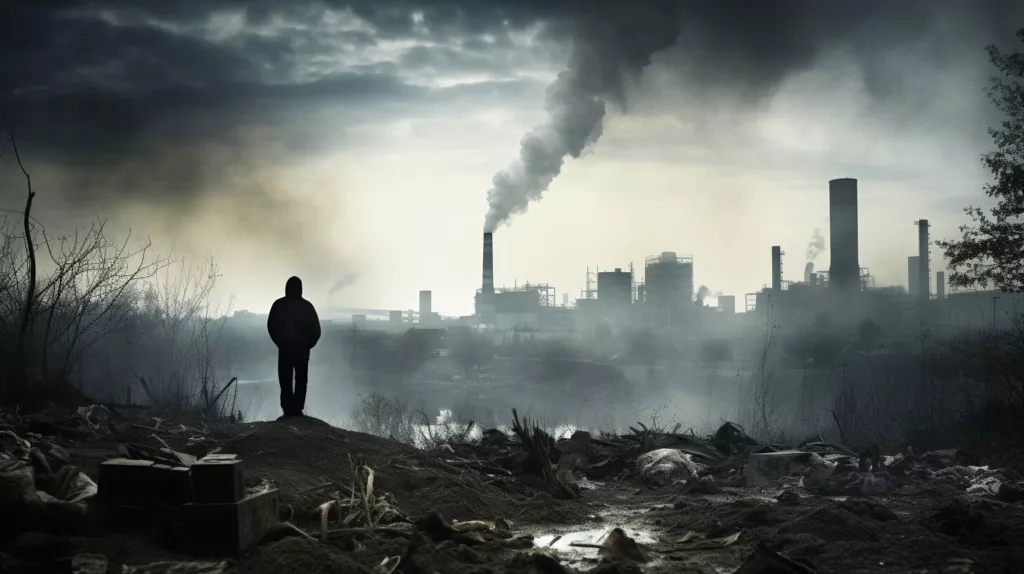Air Pollution in India – Causes, Effects, and Solution
As we continue to witness the adverse effects of air pollution on our environment and health, it is essential to address this issue. This comprehensive essay aims to explore the causes, effects, and potential solutions to combat air pollution in India. We recognize the urgency of the matter and pledge to make our country a cleaner and healthier place to live in.
Join us on this journey to understand the complex nature of air pollution and the role we can play in reducing its impact. Stay with us as we thoroughly examine the problem and propose strategies for a cleaner future.
Understanding Air Pollution
Air pollution is a complex issue that affects the environment and human health. To comprehend this problem, we must analyze its root causes. The sources of air pollution are numerous, including industrial emissions, vehicular pollution, and agricultural practices. Industrial emissions from factories and power plants contribute to air pollution by releasing harmful gases, particulate matter, and chemicals into the air.
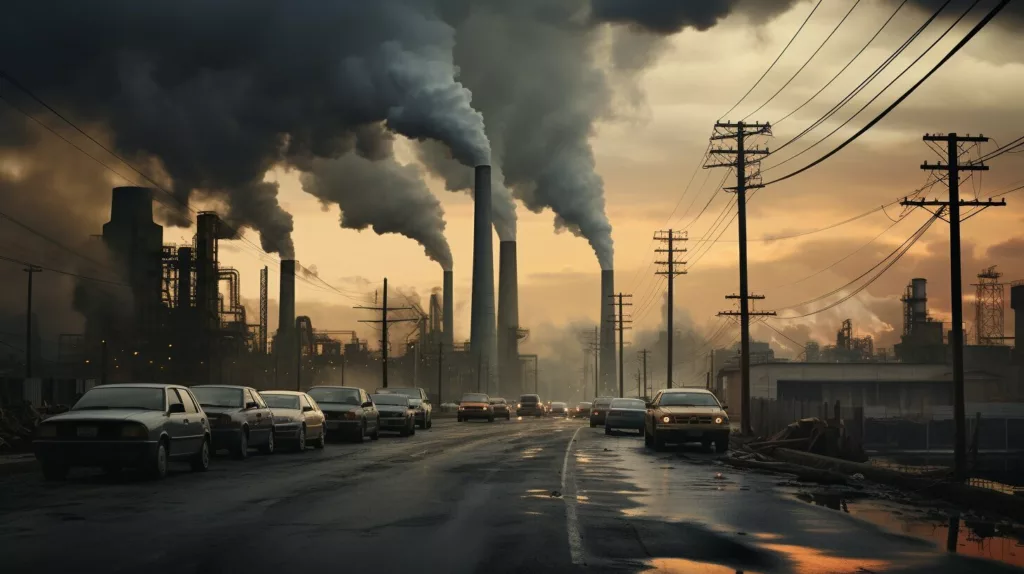
Similarly, vehicular pollution from cars, buses, and trucks is a significant source of air pollution. The rise in the number of vehicles on the roads and inadequate public transportation infrastructure has aggravated this problem. Agricultural practices such as crop burning and the use of fertilizers and pesticides also contribute to air pollution.
The adverse effects of air pollution on public health are well-documented. Exposure to polluted air can cause respiratory diseases, such as asthma and lung cancer, and aggravate existing health conditions. Air pollution also harms the environment, contributing to climate change and disrupting ecosystems.
It is crucial to address the causes of air pollution to prevent further damage to the environment and public health. The next section explores the effects of air pollution in more detail.
The Effects of Air Pollution
Air pollution is a critical issue that requires urgent attention. It poses a severe threat to both the environment and human health, causing widespread damage and health hazards. In this section, we will discuss the various effects of air pollution.
Air Pollution and Respiratory Diseases
The primary impact of air pollution is on the respiratory system. Air pollution can cause severe respiratory diseases such as asthma, chronic obstructive pulmonary disease (COPD), and lung cancer. These diseases are caused by the inhalation of harmful air pollutants such as sulfur dioxide, nitrogen oxides, and particulate matter.
Air Pollution and Climate Change
Air pollution is one of the primary causes of climate change. The emission of greenhouse gases and other air pollutants contributes to global warming, leading to the melting of glaciers, rising sea levels, and extreme weather events.
Air Pollution and Ecosystem Disruption
Air pollution can lead to ecosystem disruption. The deposition of pollutants such as nitrogen and sulfur can cause acid rain, which harms plants, animals, and aquatic life. Additionally, air pollution can interfere with the natural cycles of ecosystems, leading to significant imbalances.
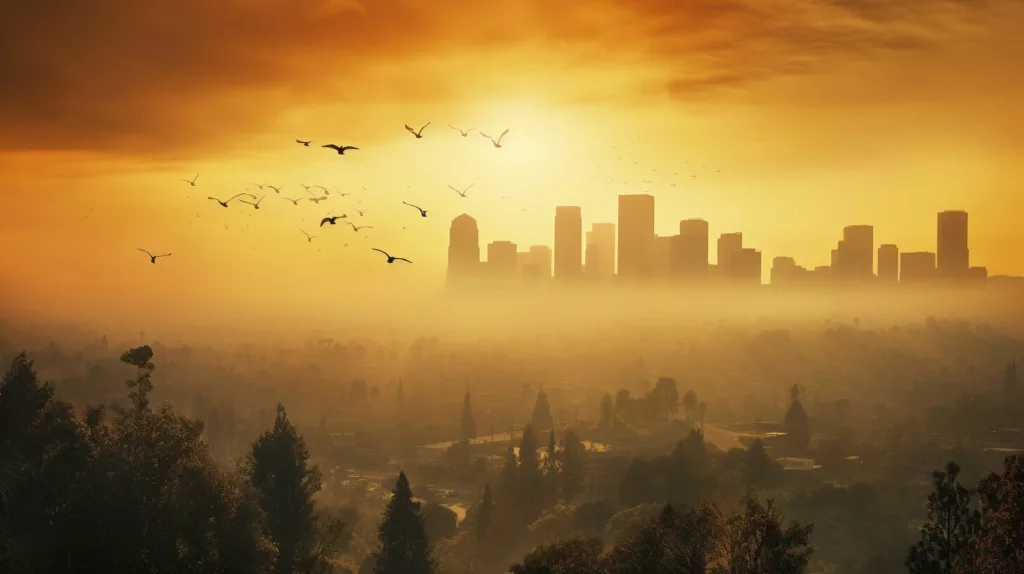
Air pollution has severe consequences on the environment and human health. It is crucial to take immediate and effective actions to reduce air pollution levels and mitigate its effects. In the following sections, we will discuss potential solutions to combat air pollution.
Air Pollution in India
India faces a grave air pollution crisis that poses a significant threat to public health and the environment. The country’s rapid economic growth, coupled with ineffective policies and inadequate enforcement measures, has led to a sharp increase in air pollution levels. The causes of air pollution in India are numerous and complex, and they require a multifaceted approach to tackle effectively.
Causes of Air Pollution in India
The primary sources of air pollution in India include industrial emissions, vehicular pollution, construction activities, and agricultural practices. The industrial sector is a significant contributor to air pollution in the country, with emissions from power plants, factories, and refineries being major sources of particulate matter and other harmful pollutants.
Vehicular pollution is another major contributor to air pollution in India. The country has one of the largest vehicle fleets globally, and outdated and poorly maintained vehicles emit high levels of harmful pollutants into the air. Construction activities also contribute to air pollution, with dust and other particulate matter being released into the air during the construction process.
Agricultural practices are also a significant contributor to air pollution in India. The practice of burning crop residues after harvest leads to the release of large amounts of particulate matter, carbon monoxide, and other harmful pollutants into the air.
Solutions to Combat Air Pollution in India
To combat air pollution in India, a multifaceted approach is required, including stricter emission standards for industries and vehicles, promotion of renewable energy sources, and implementation of effective measures to reduce agricultural waste burning. The government has initiated several measures to tackle air pollution, such as the National Clean Air Program (NCAP), which aims to reduce air pollution levels across the country.
Individuals also have a crucial role to play in combating air pollution. By adopting sustainable transportation options, conserving energy, and supporting eco-friendly practices, individuals can contribute to reducing pollution levels and creating a cleaner and healthier environment.
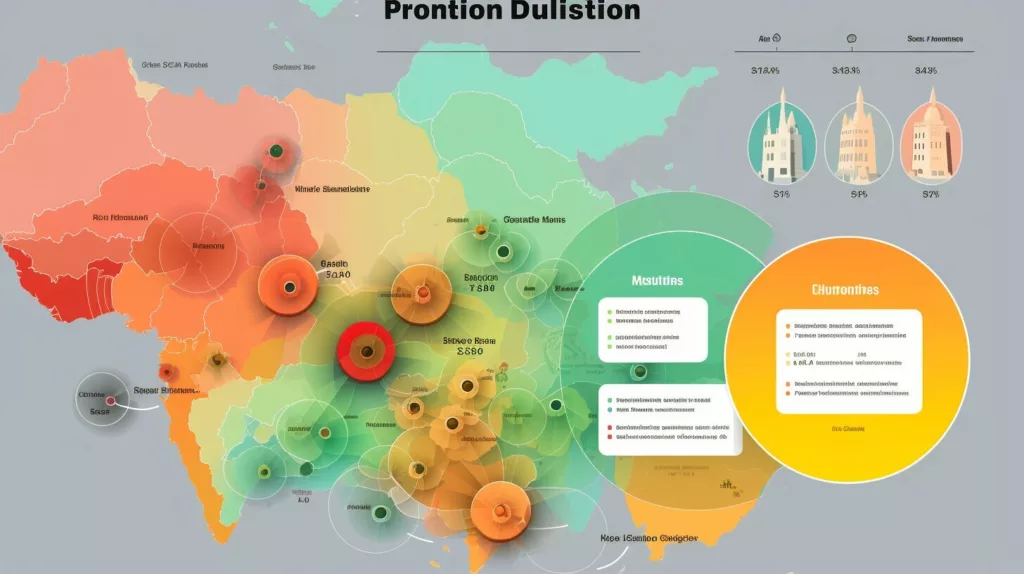
Solutions to Combat Air Pollution
Reducing air pollution requires a comprehensive approach that involves various strategies and technologies. India needs to adopt a combination of these measures to mitigate the problem of air pollution. Here are some potential solutions:
- Implementing Stricter Emission Standards: The Indian government can enforce stricter emission standards for industries, power plants, and vehicles. These standards can limit the release of harmful pollutants such as sulfur dioxide, nitrogen oxides, and particulate matter into the air. By implementing such standards, India can reduce the levels of air pollutants significantly.
- Switching to Cleaner Fuels: India can reduce air pollution by replacing conventional fossil fuels with cleaner alternatives such as natural gas, biofuels, or electricity. This transition can help reduce greenhouse gas emissions and mitigate the negative impacts on the environment and public health.
- Promoting Renewable Energy Sources: Encouraging the use of renewable energy sources such as wind and solar power can contribute to reducing air pollution. These sources of energy do not produce any harmful pollutants, unlike traditional sources of energy like coal and oil. The Indian government can incentivize the use of renewable energy sources to reduce dependency on fossil fuels.
- Investing in Public Transportation: Encouraging the use of public transportation can reduce the number of vehicles on the road, thereby reducing vehicular emissions. Investing in the expansion of public transportation infrastructure, such as buses and metro lines, can help reduce traffic congestion and improve air quality in cities.
- Promoting Eco-Friendly Practices: Encouraging eco-friendly practices, such as waste management, and promoting sustainable lifestyle choices can help reduce air pollution. The Indian government can create awareness campaigns to educate people on the impact of air pollution and how they can reduce their carbon footprint.
Adopting these measures can help reduce air pollution levels and mitigate the negative impacts on the environment and public health. By taking collective action, India can create a cleaner and healthier future for ourselves and future generations.

Addressing air pollution requires collective action, and individuals have a crucial role to play. It may seem like small individual actions are insignificant, but they can have a significant impact in the long run. Even a small effort can make a big difference in reducing air pollution levels.
One of the most effective ways individuals can contribute to fighting air pollution is by adopting sustainable transportation. Choosing to walk, bike, or use public transport instead of personal vehicles can significantly reduce air pollution levels. Additionally, carpooling with colleagues or friends can also help reduce traffic and emissions.
Conserving energy is also essential in reducing air pollution levels. Turning off lights and electronic devices when not in use, switching to energy-efficient appliances and light bulbs, and reducing water wastage are simple ways to conserve energy and reduce pollution levels.
Supporting eco-friendly practices is another important way individuals can contribute to fighting air pollution. Recycling, composting, and reducing plastic usage can significantly reduce waste levels and, in turn, air pollution levels.
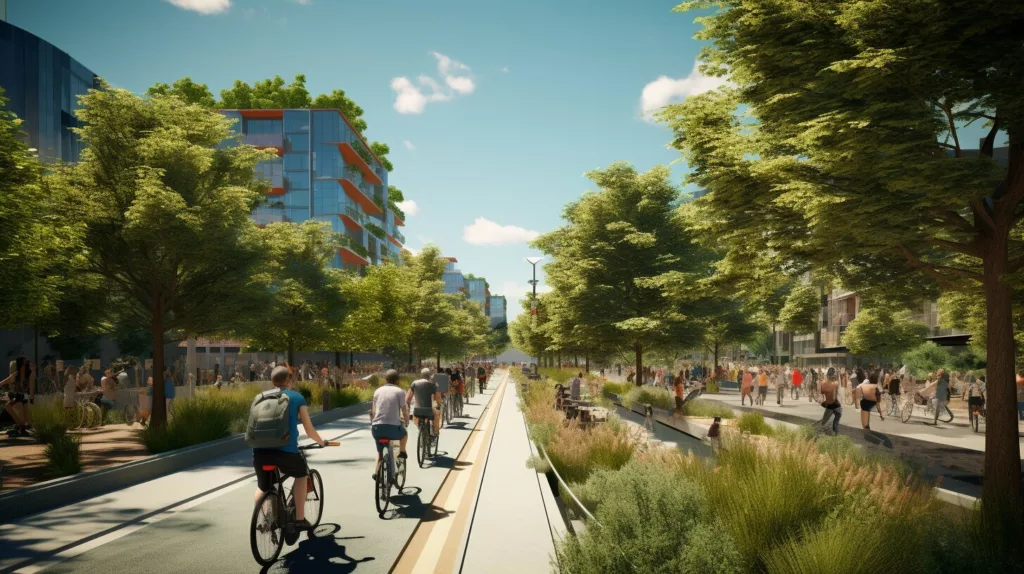
Let us all take responsibility and contribute to fighting air pollution. Our collective effort can help create a cleaner and healthier future for ourselves and future generations.
Conclusion
In conclusion, air pollution in India is a pressing issue that requires urgent attention and action. It is not just a problem for the government or industries to solve; it is a problem for everyone. As a society, we must recognize that air pollution has severe consequences for human health and the environment. While governmental initiatives are crucial, individual efforts can also go a long way in reducing pollution levels.
By adopting eco-friendly practices, conserving energy, and supporting sustainable transportation, we can contribute to a cleaner and healthier future for ourselves and future generations. It is time to take collective responsibility and join hands in this crucial battle against air pollution.
Let us work together to implement innovative solutions and practices that can help combat this growing problem. We owe it to ourselves and our planet to create a cleaner and more sustainable future. Together, we can make a significant difference in reducing air pollution levels and creating a healthier India.
Thanks For the Great Attention!
Also, Read
1000Sqft house construction cost in 2022

